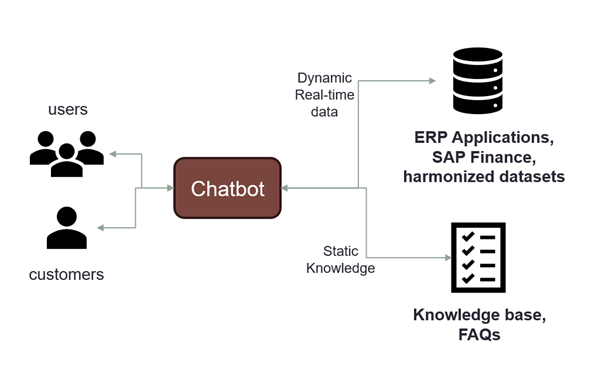Sailing Through the Clouds: Are Cloud Data Platforms like SAP Datasphere Primed for Big Business?
- Sergei Peleshuk
- Aug 25, 2023
- 2 min read
In the bustling digital age, large enterprises are at a pivotal crossroads. Drawn to the siren song of cloud platforms like SAP Datasphere, built atop the robust SAP BTP platform, they are navigating a complex mosaic of data solutions. The allure? Immense adaptability, unparalleled scalability, and a tantalizing promise of trimmed operational costs - a trifecta that resonates deeply with the multifaceted aspirations of global corporations.

However, like any new venture, moving from well-established data systems to the broad realm of cloud solutions has its challenges. Concerns about security, the complexities of transferring data, and the long-term financial implications cannot be ignored. This scenario underscores the importance of businesses approaching with both excitement and caution. While SAP Datasphere and similar platforms suggest a bright future ahead, it's worth remembering - every opportunity has its challenges.
Risks with Public Cloud Data Platforms:
A relatively nascent maturity curve
Ever-present specter of data breaches
Limited reigns over the infrastructure
Potential lags in data latency
A talent pool that's still catching up
Shining Advantages of SAP Datasphere & Public Cloud Platforms:
Wallet-friendly infrastructure
Swift, streamlined deployments
Cutting-edge offerings, including AI, advanced analytics, and seamless integration capabilities
Effortless scalability
Centrally managed updates
Solid SLAs & consistent availability
Shrinking in-house infrastructure overheads
A treasure trove for data from varied systems
SAP BW Bridge: The Caveats vs. SAP BW/4HANA
Certain limitations are noticeable, such as unsupported BW queries and the absence of an OLAP engine, data tiering, and analysis authorizations. However, it's crucial to understand that SAP Datasphere isn't a mere replica of SAP BW/4HANA. Its design divergences mean that while some features might seem lacking, they are often just conceived differently. In fresh, ground-up implementations, these aren't dealbreakers.
Moreover, the shadow of security concerns in cloud computing isn't impenetrable. Armed with expertise, ongoing training, and strategic risk countermeasures, the fortress of cloud databases can be safeguarded effectively. Security intelligence tech offers a supportive hand, but it's the human touch - vigilant and informed - that stands as the unyielding bulwark against threats.




Comments